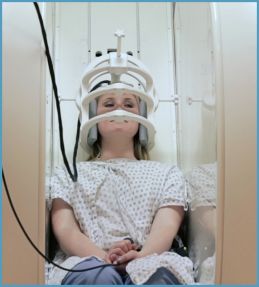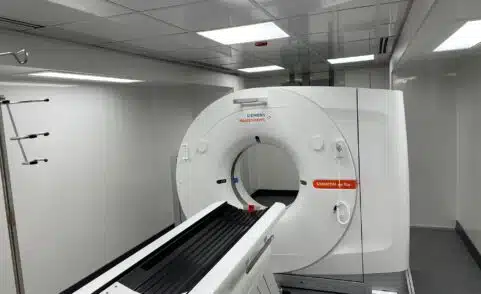
I’m Getting an MRI, so What’s a Coil?
Not every MR exam is the same. Each is very specialized to the scan you’re having and the type of coil being used. A coil helps the MR machine gather high-quality images of a specific body part and is essential in generating images. But some patients aren’t expecting a coil when they arrive for their scan appointment. So if your imaging provider doesn’t talk to you ahead of time about coils, it’s important to ask so you’ll know what you’re getting.
The piece that makes the pictures
The technologists who help patients through their MRI exams say when patients see the coil, they almost always ask, “What is that for?” The answer is pretty simple. “The coil is the piece that makes the pictures.” In fact, RAYUS MRI technologist Wendell Anderson puts it this way:
No coils = no images
That’s because during your MRI a radiofrequency is transmitted into your body. The coil acts as an antenna to receive the radio frequency signal coming out of your body and transmit that data to a computer which then generates images.
When patients ask RAYUS lead technologist Kathleen Bence about coils, she gives the “radio antenna” explanation and reassures her patients that the coils pose no health risk, or danger to the patient.
Coils designed for each body part
Some coils are very obvious. They are like a frame that fits over the body part you’re having scanned. But during some exams, you may not even realize a coil is involved. For example, in a spine scan, you might lie on top of a coil and not even know it’s there. Other coils are flexible, wrapping around the body part to be scanned and are held together with Velcro. You might get one of these coils if you are getting an MRI of the hand, wrist, shoulder, abdomen, or pelvis.
Brain scan requires helmet-like coil
The biggest coil surprise seems to come for patients getting an MRI of the head. If you are lying down, you place your head in the bottom half of the coil a
nd the top half is snapped in place over your face. If you are getting a scan in an Upright MRI, the coil slips down over your head like a football helmet. In both cases, there are openings that allow you to see out. Technologist Wendell Anderson said when his patients feel uneasy about the head coil, he gives them a demonstration. “I put the top piece in place, and ask the patient to slide down and out of the coil.” Once they see they can get out on their own, Wendell says patients do just fine.
Each manufacturer designs coils differently, so the exact look will depend on whether your scan is being done on a machine made by Siemens, GE, Hitachi, or Invivo.



